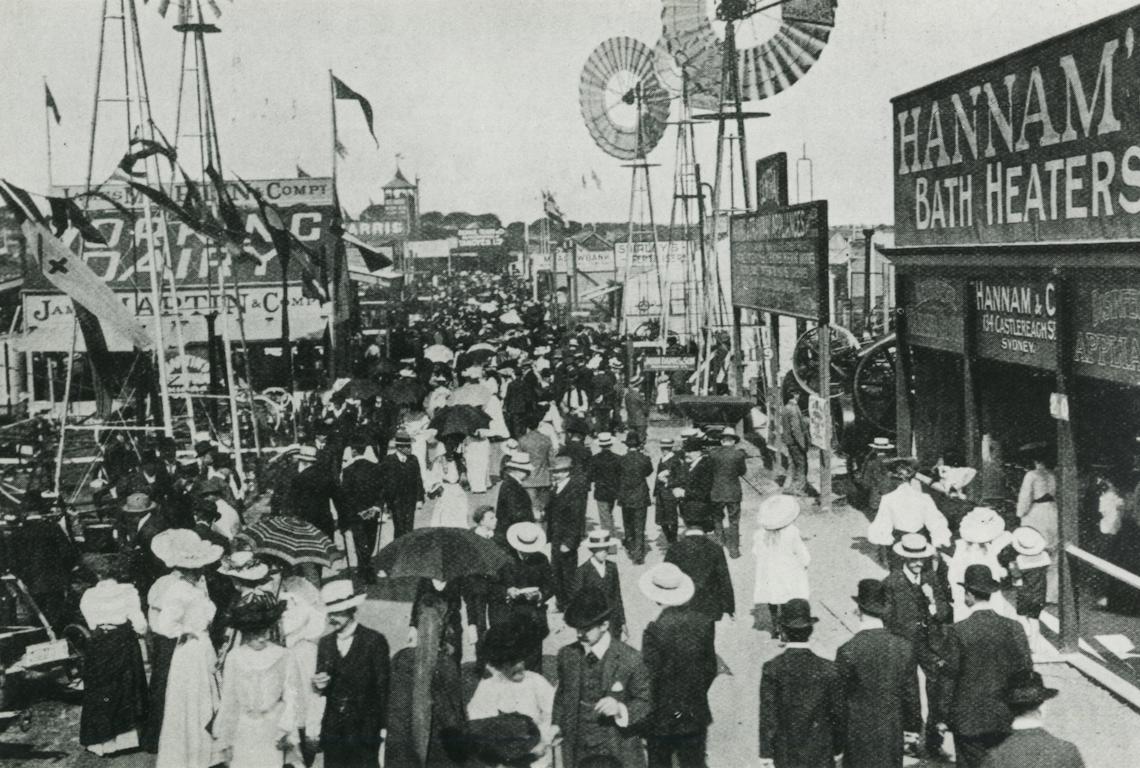Machinery Avenue Heritage Highlight

Machinery Avenue & Mechanical Inventions at the Moore Park Easter Show
Since founding member Edward Wollstonecraft presented General Beatson’s imported ‘agricultural cultivator’ to an RAS meeting at Parramatta in 1823 – compelling displays of farm equipment and vehicles became a Show highlight. Following the move to Moore Park in 1882 crowds flocked to see the latest agricultural apparatus on exhibit and by 1900 Machinery Avenue was a magnet for showgoers.
In 1906 Sydney company Ham & Owen exhibited the first tractor at the Moore Park ‘Royal Show’ and urged customers to inspect the British ‘Ivel’ - a ‘Little giant labour saver for all classes of agricultural work’. Beside it, along the length of Machinery Avenue were windmills, irrigation machinery, pumping plants, sheep shearing and wool baling machinery, agricultural implements, fertilisers, sheep dips and the hundred and one other articles in daily use by ‘the man on the land’.
Well positioned between the stimulating Parade Ring and lubricating Wine Kiosk, Machinery Avenue presented a one stop shop. 'If at any time in his life the pastoralist and the farmer is in a buying mood surely it is at "Showtime" when he has had demonstrated to him the rapid march of invention to aid him in his struggle'.
But the 'city slickers' were not left out and from 1897 a prize was offered for the best ‘motor cars’ and ‘cycles’ - contraptions which would soon become a common sight on the streets of Sydney. In 1901 a special part of the ground was even set aside for their use, prompting the Sydney Morning Herald to comment, ‘The advent for the first time in the history of the Society, of an imposing array of automobiles on the asphalt track was a most interesting event. Eight or nine automobile carriages, buggies and a post-office delivery van appeared on the track… The carriages and buggies, besides the drivers, contained passengers who were treated to an exhilarating ride at a rapid rate. Two of the carriages were sent around at a 30-miles an hour speed and the display was warmly cheered.’
Mechanical innovations and inventions of all sorts continued to be highlighted at the RES as the 20th century progressed and showgoers meandering up Machinery Avenue and into the surrounding pavilions would continue to marvel at the innovative products presented.